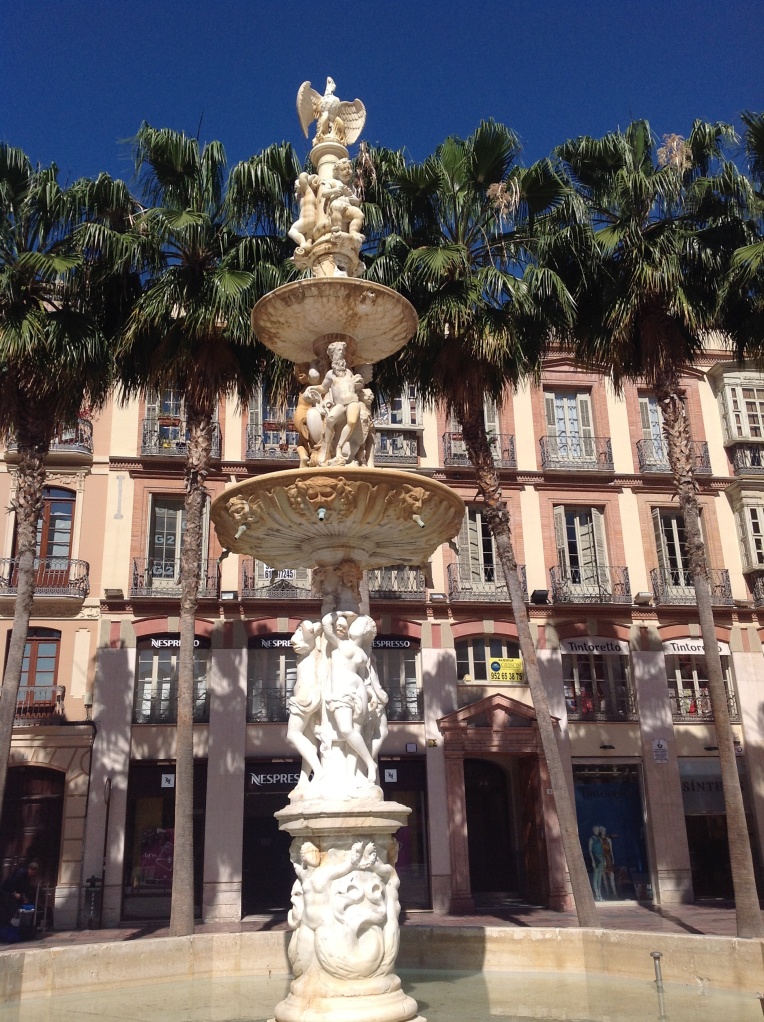
Reviewing the information I had on Málaga before I my trip, I happened upon some information that very well might interest some of you. It’s a mystery. One that’ll be solved right here. First of all, I’ll let the Málaga tourist office’s website set the scene. Here’s the description:
‘PERIOD 16th – 17th century DESCRIPTION The Carlos V Fountain, which dates back to the 16th century and is also known as the Genovese Fountain, is a gracious example of Italian Renaissance architecture. This marble fountain has been traditionally considered of Genovese origin, and although how it arrived in Málaga is not very clear, there is documental proof that the Town Hall paid 1,000 Ducats for it. It is decorated with aquatic motifs, nymphs and children with dolphins, etc. It has a huge twelve-sided bowl, decorated with grooves and the column that rises from the centre is divided into several sections. At the bottom there are three mermaid figures with their tails linked together holding crowns and flowers; above these there are another three half-naked female figures, possibly nymphs, with dolphins, whilst around the upper part there is another bowl edged with figureheads spouting water from their mouths. The final part, a pedestal that rises up from this last bowl, has another three figures, also intertwined, which seem to represent Neptune and a small bowl, very much worn away, in which the remains of the heads of cherubs can be seen, as well as a final column decorated with the figures of children with dolphins on their shoulders. An eagle tops the whole ensemble.’
Did you catch that? A sixteenth century whodunit.
‘how it arrived in Málaga is not very clear‘
Well, I can’t keep my secret any longer. It was me. Back then I was rather altruistic.
Rather magnanimous of me, wasn’t it?
You’re welcome Málaga. Twas my pleasure.
One question: how on earth did you get that through customs?
That’s an excellent question.
The style of the times was incredibly baggy trousers. I hid the fountain in my trousers.
That’s some time traveling bon vivantery, right there. What a gift. I hope they were properly appreciative.
Next: solve the 16th century mystery of the Roanoke Colony. That one’s bugged me since I learned about it in high school.